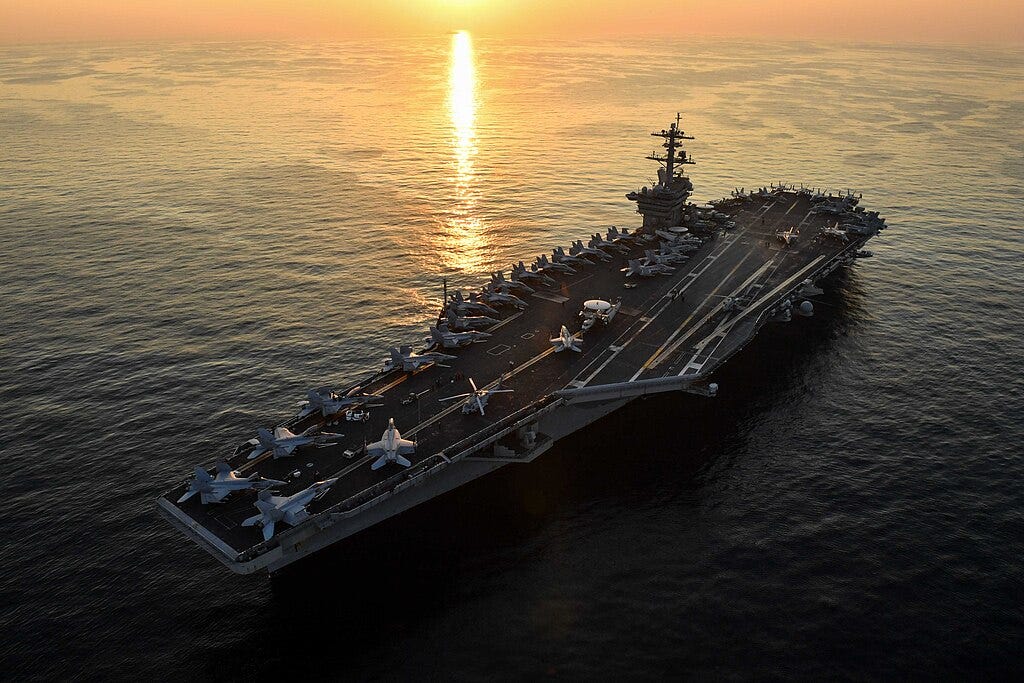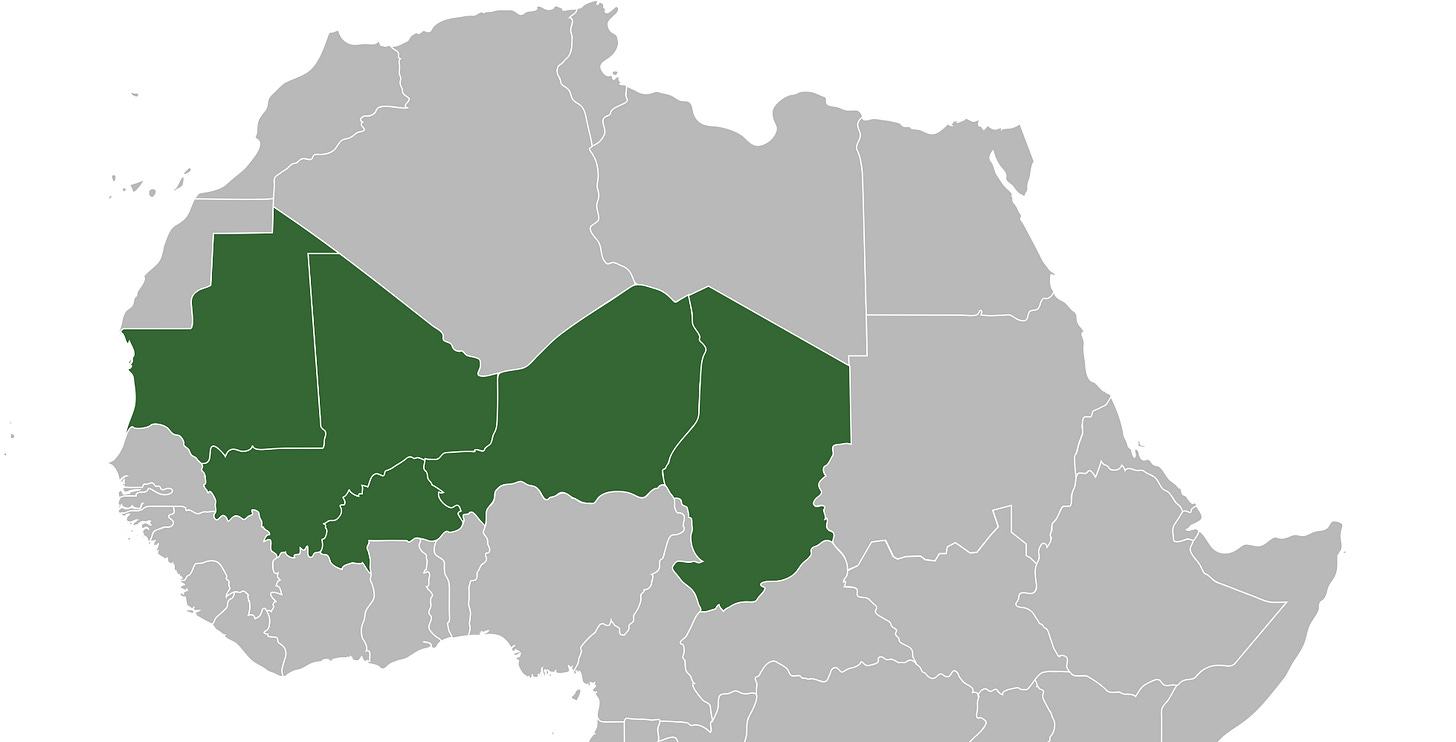Border Surges, Energy Shortages, and Great-Power Games
From migrant surges on the U.S.–Mexico border to collisions in the South China Sea, this week’s crises reveal a fragile world where local disputes ripple into global instability.
Americas – U.S.–Mexico Border Tensions Flare Over Migration Surge
The U.S.–Mexico border has become the frontline of a crisis that is no longer just domestic but hemispheric. Migrant encounters have once again reached record highs—driven by economic collapse in Venezuela, climate shocks in Central America, and political instability across the region. Shelters are overflowing, deportation flights are accelerating, and humanitarian groups warn of worsening conditions.
Image: Rio Bosque Wetlands Park, border wall,” by Megalibrarygirl, CC BY‑SA 4.0
In Texas, a new layer of conflict has emerged: clashes between federal authorities and state governments. Governor Greg Abbott has deployed thousands of National Guard troops and enacted laws that push the boundaries of state authority on immigration, challenging Washington’s primacy. The Supreme Court has already been drawn into disputes over who controls border enforcement.
But the implications extend far beyond border towns. Delays at crossings are slowing trade flows under the USMCA agreement, from automobile parts to agricultural produce. Mexico, pressured to curb migration but constrained by domestic politics, finds itself both a partner and a target of U.S. criticism. Central American leaders argue that without substantial investment in development and climate adaptation, migration will remain a structural feature of the region.
In Washington, the debate remains polarized. Some call for militarized deterrence, while others push for comprehensive reform that accounts for labor market needs and humanitarian obligations. What is clear is that migration is no longer episodic; it is a structural phenomenon shaped by demographics, weak governance, and climate change.
Our Take: The real threshold may not lie at the Rio Grande but in the resilience of North America’s institutions. How far can federal–state tensions stretch before governance itself begins to fray?
Europe – EU Faces Energy Crunch as Russian Gas Flows Decline Again
Europe is once again confronting the specter of an energy crisis. Russian natural gas deliveries—already drastically reduced since 2022—have dipped further, rekindling fears of a difficult winter. While storage levels remain high, prices are edging upward, threatening industries still reeling from post-pandemic inflation.
Image: “Zapolyarnoye Field (Novy Urengoy): gas treatment facility,” by Government of the Russian Federation, CC BY 4.0.
The crisis is forcing Europe to accelerate diversification: importing more liquefied natural gas (LNG) from the United States and Qatar, strengthening pipeline links with Norway, Algeria, and Azerbaijan, and investing heavily in renewables. Yet diversification is slower and costlier than policymakers had hoped. Energy-intensive sectors—steel, aluminum, chemicals—face existential questions about competitiveness if prices stay structurally higher than in the U.S. or Asia.
Strategically, the crunch strikes at Europe’s quest for autonomy. Brussels aspires to act as a geopolitical power, but dependence on external suppliers constrains choices. Can the EU sustain sanctions on Moscow if households once again face spiking energy bills? Can it accelerate its green transition without triggering social backlash?
The stakes are clear: energy is both economic fuel and strategic leverage. Moscow knows this—and so do the governments in North Africa and the Gulf that Europe now courts.
Our Take: The EU’s red line is not measured in cubic meters of gas but in public tolerance. If households face another winter of soaring bills, political unity could fracture.
Middle East – Gulf States Maneuver Between U.S. and China on Security Deals
The Gulf monarchies are walking a careful tightrope. Saudi Arabia and the UAE still rely on U.S. security guarantees—the backbone of Gulf stability since the Carter Doctrine—but they are simultaneously deepening defense and technology ties with China. Drone sales, AI research partnerships, and joint infrastructure projects point to a wider alignment than Washington is comfortable with.
Image: “USS Theodore Roosevelt (CVN 71) transits the Arabian Gulf,” by Mass Communication Specialist 3rd Class Anthony J. Rivera, CC BY 2.0
For Riyadh and Abu Dhabi, this is pragmatic diversification. They see a world shifting from U.S. unipolar dominance to multipolar rivalry, and hedging between great powers feels like insurance. In Washington, however, alarm is mounting: Chinese-built 5G networks, AI ventures, and defense sales could erode long-standing U.S. influence in the Gulf.
The stakes are immense. The Gulf is not just about oil; it is the cockpit of global trade routes, energy security, and religious authority. If U.S. dominance wanes, could China—or Russia—step in as guarantors of stability? Or would the region slip into uncertainty?
For now, Gulf leaders believe they can balance: U.S. fighter jets for deterrence, Chinese partnerships for technology and economics. But the longer this balancing act lasts, the more likely they will be forced to choose.
Our Take: The Gulf’s red line is ambiguity itself. How long can these states maneuver without triggering a decisive rupture with Washington—or Beijing?
Africa – Coups and Counter-Coups in West Africa Threaten Regional Stability
West Africa’s Sahel has become a graveyard of democratic transitions. Coups have toppled governments in Mali, Burkina Faso, Guinea, and Niger—each justified as a response to insecurity but rooted in deep institutional weakness. Another fragile civilian government has now fallen, perpetuating the cycle.
Image: “G5 Sahel map” by JayCoop, licensed under CC BY-SA 4.0
France, long the region’s primary security partner, is withdrawing troops amid rising resentment. Into the vacuum steps Russia, via the Wagner Group, trading security services for mineral concessions. China advances quietly through infrastructure investments that bind resource flows eastward.
The consequences ripple outward. Sahel instability incubates jihadist groups tied to al-Qaeda and ISIS, threatening coastal states from Nigeria to Côte d’Ivoire. Mass displacement fuels migration northward, intensifying Europe’s political debates. Control over gold, uranium, and rare earths adds a global dimension as powers vie for access.
West Africa is thus more than a regional crisis—it is a frontline in the contest over resources, influence, and fragile sovereignty. Each coup deepens the vicious cycle: weaker institutions invite more external meddling, which corrodes sovereignty further.
Our Take: The true red line is institutional collapse. Once governance erodes, no foreign power—Paris, Moscow, or Beijing—can impose stability.
Asia-Pacific – South China Sea Confrontations Intensify
Tensions in the South China Sea have entered a more dangerous phase. A collision between Chinese and Philippine vessels—part of a long series of maritime confrontations—has heightened fears of open conflict. While no lives were lost, the symbolism is striking: disputes once confined to diplomatic notes are now being played out with steel on water.
Image: The U.S. Navy littoral combat ship USS Mobile (LCS-26) (left) conducts a Maritime Cooperative Activity with the Philippine Navy patrol ship BRP Ramon Alcaraz (PS-16) (right) in the South China Sea in July 2024.
The stakes go far beyond scattered reefs. The South China Sea carries a third of global trade. It is also central to U.S. alliances in Asia, with Washington bound by treaty to defend the Philippines in the event of armed attack. Each incident tests American resolve: would Washington act if Manila faced sustained coercion?
Beijing’s strategy is incremental: deploying coast guard ships, maritime militias, and economic pressure to establish “facts on the water.” Manila, emboldened by closer security cooperation with Washington, is pushing back more openly. The risk is miscalculation: a collision escalating into an exchange of fire, dragging in the United States and perhaps other regional powers.
For China, backing down would undercut its nationalist narrative. For Washington, hesitation would weaken credibility across Asia. For Southeast Asia’s smaller states, the nightmare is being forced to choose sides.
Our Take: The most fragile line is between gray-zone coercion and open warfare. One misstep at sea could redraw Asia’s security map overnight.





